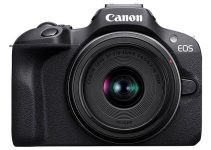Working with chroma keying and composites on various filmmaking projects has become an industry standard throughout the years predominantly due to the latest advancement in computer technology and motion graphics.
Yet, CGI is not the only available asset you can use to achieve high-end results when you need to add or replace a certain part of an image in a digital environment. Moreover, we even see a growing trend of utilising more and more practical effects instead of computer generated imagery not only in the major tentpole Hollywood productions but also in low-budget independent projects as well.
Using a screen projector for replacing background in а frame is another common and highly efficient technique that has been adopted by many independent filmmakers these days. Director and cinematographer Matthew Rosen shows his personal workflow on integrating a rear screen projection in one of his latest projects.
Shooting this particular scene of a couple sitting in a fancy restaurant would be almost impossible if the filming was taking place on a real location instead of a studio with a rear screen projection. The down side of the process is that the setup of the projector still has to be done prior to filming. The biggest advantage though is that when you shoot this way you can see what you are getting right away, plus your actors will be feeling more comfortable when acting in a real environment instead of in front of a green screen.
Nowadays you can use even a consumer projector to achieve great-looking professional results. Everything you are going to need to this type of setup is a projector, a screen, a camera, set of lights and your talents, of course.
Furthermore, by moving the actors away from the screen, you can control the depth of field of your shots. You can also control the focal depth by defocusing the projector itself. It’s also possible to dolly the camera to create the illusion of depth using parallax and occlusion. As a rule of thumb, the further the talents from the screen, the greater parallax effect you can achieve in your shot.
Before you start filming, though, you have to match the light on your subjects in frame with the value of the light coming from the projector. In most of the occasions lighting your foreground with lights ranging from 50 to 150 Watts will be enough to do the job. Naturally, the lower your foreground light is, the brighter your screen will appear.
In the following shot, you can see the effect of the projector looking very much as a view from a window in the background. It will be significantly more difficult to achieve the same realistic look through a composite or any other type of VFX manipulation.
To add even more realism to the scene Matthew Rosen decided to put a glass in front of the screen so that the camera captures some of the reflections of the two actors which in this case is another way to make the scene look even more natural and realistic.
It’s worth mentioning that you also don’t necessarily need the highest-resolution camera to capture footage for the background plate. In this case, for instance, a single Canon 60D was utilised to shoot the gorgeous city landscape mainly due to great low-light sensitivity the camera provides.
Ultimately, rear screen projection can be a great alternative to green screen, besides all the advantages and the value, this way of shooting can bring to your production. Remember that making your footage looking as real and natural as possible regardless of the filmmaking techniques you are utilising is one of your main goals that you as a filmmaker should always be aiming for, no matter what.
[via: Wolfcrow, source: KINETEK]
Disclaimer: As an Amazon Associate partner and participant in B&H and Adorama Affiliate programmes, we earn a small comission from each purchase made through the affiliate links listed above at no additional cost to you.
Claim your copy of DAVINCI RESOLVE - SIMPLIFIED COURSE with 50% off! Get Instant Access!






Very nice article, thanks for sharing.